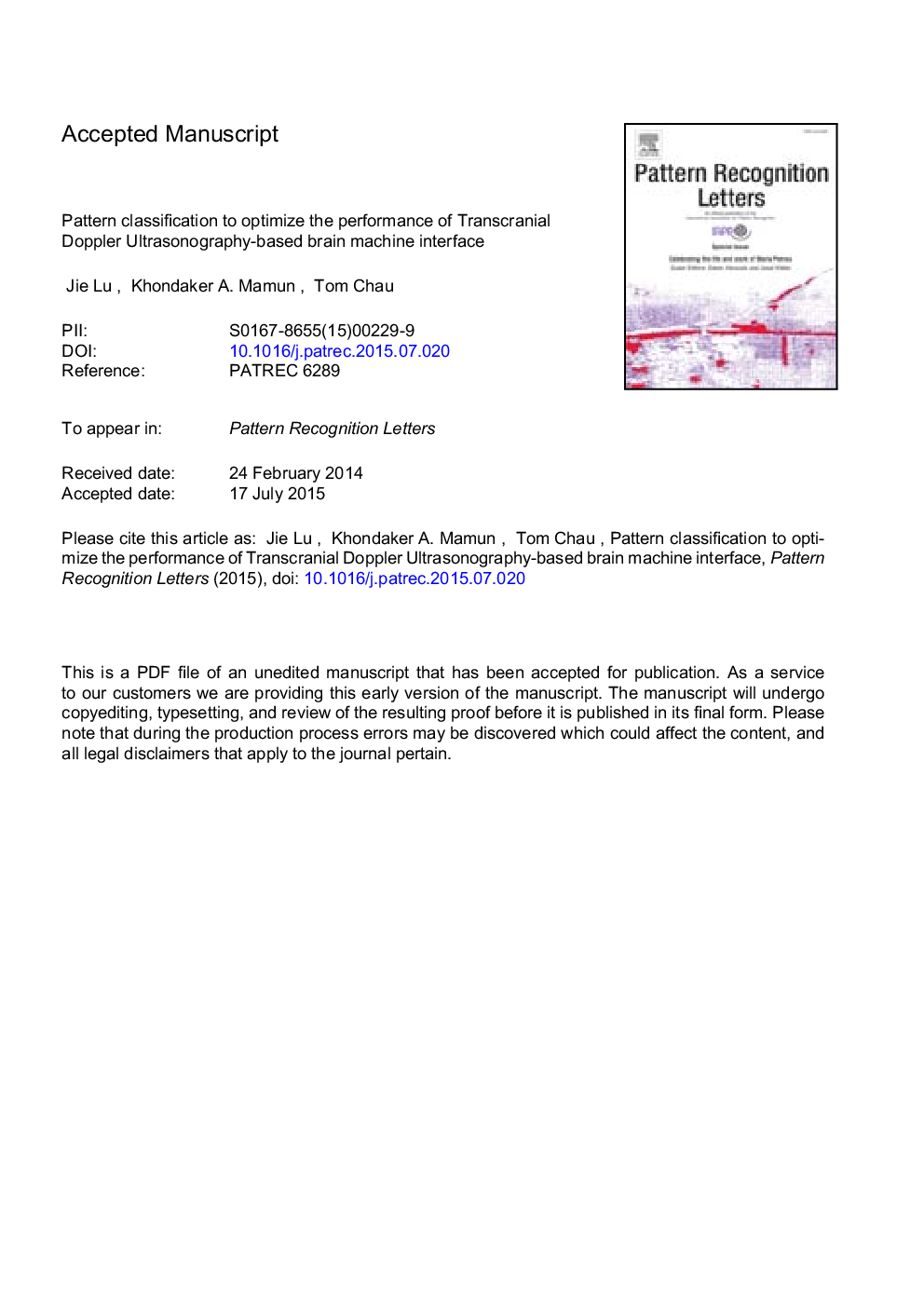| Article ID | Journal | Published Year | Pages | File Type |
|---|---|---|---|---|
| 6941096 | Pattern Recognition Letters | 2015 | 11 Pages |
Abstract
Transcranial Doppler Ultrasonography (TCD) is an emerging brain-computer interface (BCI) modality. Previous offline studies have demonstrated algorithmic differentiation between two mental tasks with accuracies in excess of chance, but have used computationally sophisticated features and classifiers. A preferred approach for eventual online implementation has not yet been identified. In this study, we conducted an offline analysis of TCD recordings to investigate the potential for increasing accuracy in a TCD-based BCI while adhering to features and classifiers computationally conducive to online implementation. We re-examined blood flow velocities from Lu et al. (2014), recorded from the left and right middle cerebral arteries of 10 able-bodied participants during the performance of two different mental activities (mental spelling and visual tracking). Invoking a signal processing and pattern classification method from previous offline TCD studies, we obtained an average accuracy of 73.32 ± 4.09%. We subsequently compared systematic feature selection approaches (Fisher criterion, sequential forward selection, weighted sequential forward selection) and three classifiers, namely, linear discriminant analysis (LDA), Naïve Bayes (NB), and support vector machine (SVM). With the combination of weighted sequential forward selection (WSFS), which yielded less than a handful of time domain features, and a SVM classifier, a maximum accuracy of 87.60 ± 3. 27% was attained. Similar results were achieved with sequential forward selection and a SVM classifier. Our findings support the development of highly accurate online TCD-BCIs with computationally simple features.
Keywords
Related Topics
Physical Sciences and Engineering
Computer Science
Computer Vision and Pattern Recognition
Authors
Jie Lu, Khondaker A. Mamun, Tom Chau,
